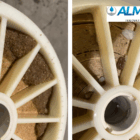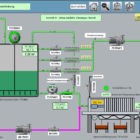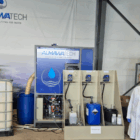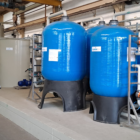Thickeners are system components in industrial water and wastewater treatment that are used to increase the solids concentration in sludges and suspensions and thus reduce the volume. They are particularly important in sewage sludge treatment, as they increase the dry matter in the sludge before it is transferred to subsequent dewatering or drying processes. Thickeners are used in a variety of industries, including wastewater treatment plants, the food and beverage industry, the chemical and petrochemical industry and the pulp and paper industry.
Table of contents
Technical basics of the thickener
The thickener works according to the principle of gravity sedimentation or flotationwhereby the solid particles sink to the bottom due to their density or rise to the surface if they are less dense. Thickeners can significantly increase the dry substance (DS) concentration of sludge by allowing the water to settle and separate it from the sludge.
Types of thickeners
Gravity thickener:
- These thickeners use gravity for sedimentation. They usually consist of a large, cylindrical container in which the solids sink to the bottom while the water flows out at the top via an overflow. Gravity thickeners are suitable for sludge with a high concentration of solids and relatively large particles.
Floating thickener (flotation thickener):
- In this type of thickening, air bubbles are used to drive the solids upwards. This is particularly useful for sludges that contain finer particles or have a low density. The floating solids are then drawn off the surface while the water underneath drains away.
Belt and disk thickeners:
- These mechanical thickeners use belts or rotating disks to thicken the sludge. They are more compact and mechanically designed, which makes them particularly suitable for limited space conditions and are often used in the paper and food industries.
Centrifugal thickener:
- Centrifuges use centrifugal force to separate solids and water and are particularly effective for very fine particles. The high speed separates solids from water efficiently. However, centrifuges can be energy-intensive and are often used for sludges that are difficult to treat.
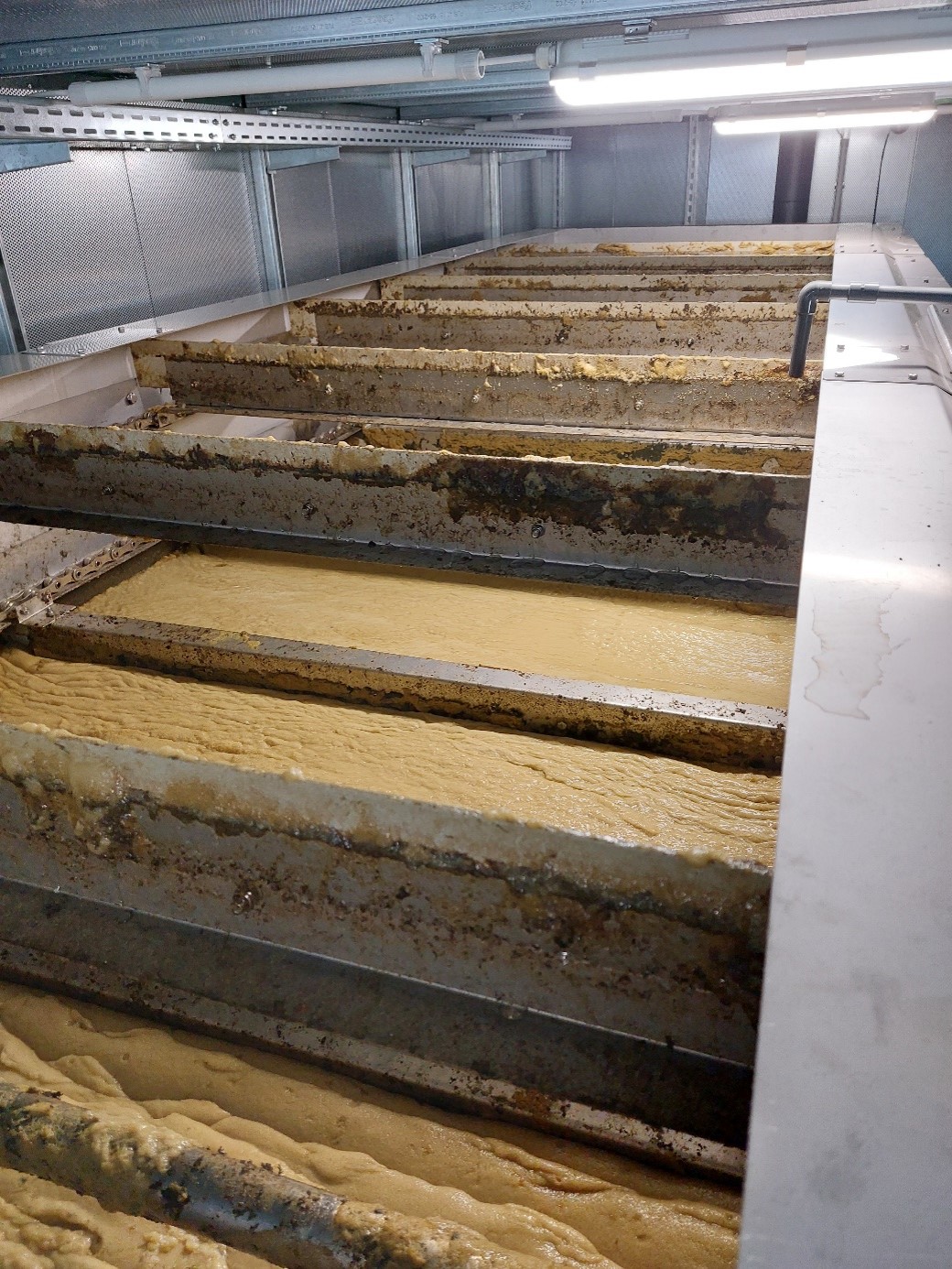
Photo: ALMA NeoDAF flotation plant with precipitation stage
Functionality and sequence of the thickening process
Feeding of the sludge:
- The sludge to be treated is fed into the thickener. The retention time is adjusted depending on the type and density of the solids and the composition of the sludge.
Sedimentation or flotation:
- In gravity thickeners, the solids sink to the bottom while the water drains off. In flotation thickeners, the solids rise to the surface due to the adhesion of air bubbles.
Removal of the thickened sludge:
- The thickened sludge is collected at the bottom or on the surface of the thickener and transferred to the next treatment stage. The water content in the sludge is now significantly reduced, which increases the efficiency of further dewatering.
Drainage of the clear water:
- The treated water is collected at the overflow and discharged. Depending on the requirements and degree of contamination, this water can be reused or treated further.
Areas of use and applications of thickeners
Thickeners are used in various industries to reduce the volume of sludge and lower dewatering costs. Here are some of the main applications:
Municipal and industrial wastewater treatment plants:
- Thickeners are essential for the treatment of primary and secondary sludge. They reduce the sludge volume before the sludge is dewatered or processed in further treatment, for example in digesters.
Paper and pulp industry:
- Large quantities of fibrous wastewater are produced here, which must be thickened in order to reduce disposal costs and enable the residual materials to be processed further.
Food industry:
- Food processing produces sludge with a high organic load, which is prepared for further treatment in thickeners. This is particularly important for reducing transportation and disposal costs.
Chemical and petrochemical industry:
- Thickeners are used to compact wastewater containing solids and to remove toxic or poorly degradable substances in a concentrated sludge.
Mining and metal processing:
- This produces sludge with a high solids content and abrasive particles, which are processed by thickeners for dewatering and disposal.
Technical advantages of thickening
Cost reduction through volume minimization:
- Thickeners considerably reduce the volume of wastewater and thus the disposal costs, as the volume of sludge to be disposed of is greatly reduced.
Improving the efficiency of subsequent treatment stages:
- Increasing the solids concentration optimizes the efficiency of further dewatering and drying, as less water enters the next treatment process.
Reuse of water:
- In many cases, the drained clear water can be returned to the cycle or reused after minimal treatment.
High flexibility and adaptability:
- Depending on the sludge composition and solids content, thickeners can be supplied in different sizes and with different technology.
Challenges and requirements
Susceptibility to clogging and sedimentation:
- Especially with gravity thickeners, there is a risk of blockages and sedimentation with a higher solids content or larger particles. Regular cleaning and maintenance are required to maintain efficiency.
Energy requirement for mechanical thickeners:
- Mechanical thickeners and centrifuges are more energy-intensive than gravity thickeners, which can lead to higher operating costs.
Adaptation to different types of sludge:
- Depending on the properties of the sludge to be thickened, precise adjustment of the thickener type and operation is required. Sludges with abrasive or toxic substances may require special wear protection and materials.
Conclusion
Thickeners play a central role in industrial wastewater treatment, as they make downstream processes more efficient by reducing the sludge and water content. They are essential in a wide range of industries as they reduce the volume of material to be disposed of and lower disposal costs. Thanks to their flexibility and the use of various processes - from gravity and flotation to mechanical thickeners - thickeners are suitable for a wide variety of sludges and are an essential component for optimized sludge treatment in the wastewater industry.
For further information on our products, please feel free to contact us at any time!


